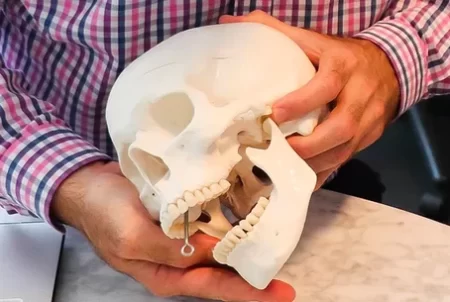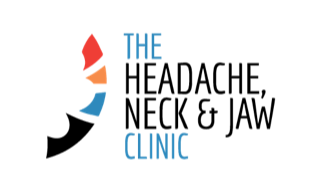Why did I wake up and my jaw locked suddenly overnight? Why did my jaw lock eating a handful of peanuts?
A spontaneous closed lock seems like it is exactly that. One minute you are fit and well with no jaw pain, the next minute, your jaw is locked. You are in terrible pain, can’t eat and have booked in for surgery to get your jaw surgically opened up with an arthrocentesis, which can’t happen soon enough. What just happened?
A spontaneous lock is misleading. It is a culmination of many different things going wrong. If you know what to look for, there are predictable and consistent signs and symptoms that can tell you if you have TMJ dysfunction and are at risk. If you know what to look for.
Why Does This Occur? A Quick Anatomy Explanation
The structure that actually is causing the lock is called the meniscus or articular disc, which is a big piece of cartilage that sits between your jaw and skull and acts a s both a shock absorber and movement facilitator. The Meniscus is a passive structure, meaning you can’t consciously move it or control it and it is at the mercy of the length of the connective tissue that holds it in place and the strength of the muscles that move the jaw joint. It is Avascular and Aneural, which means it has no blood supply and no nerve supply. No nerve supply means it can’t tell you when it’s being overloaded.
Shock Absorber

The disc sits between the jaw and skull and when you chew, it stops the two bones rubbing together. The articular disc has the ability to remodel and heal, meaning it is happy to absorb the 20 mins of compressive force each day while you are chewing. If you start clenching at night and put a solid 8 hours of force through the disc while you sleep, the disc starts to get stressed and starts to change shape and position. It has no nerve supply, so it has no pain receptors in it to tell you it is failing, and your bodies response is to compensate.
Movement Facilitator
When you open your jaw, the disc slides forward in the socket to keep the jawbone in a stable position. There are small, pilates style, stability muscles that hold this in an optimal position to facilitate the movement. With clenching, the pilates style muscles get inhibited and the jaw starts moving unevenly, swinging left or right or both. This loss of control leads to the jaw clicking (link to video) over the disc and brings in more compensations, including sticking your neck in a head forward posture to overcome the obstruction.
So when we look closely at a spontaneously locked jaw, there is increased activity in the jaw clenchers, muscle weakness, loss of range of motion bite marks on your tongue, movement deviations and joint sounds, head posture changes maybe with some headaches, which all on their own seem innocuous and easy to miss because they don’t have pain associated with them and you can still eat…
BUT
If the stressors continue and your compensations get maxxed out, the jaw locks, it becomes painful, you can’t eat and you get diagnosed with a spontaneous closed lock (years in the making). An Arthrocentesis can be a great treatment option to get you out of trouble in the first 6 weeks but doesn’t change the underlying reason it happened, which is where physiotherapy comes in.
Physiotherapy Treatment for TMJ and Jaw Pain

Physiotherapy is effective in treating TMJ and jaw pain. Our TMJ treatments are designed to relieve the initial symptoms and fix the underlying problem to assist in the recovery of your joint. In some cases, this may require working with other healthcare professionals.
Our physiotherapists conduct a complete assessment and set out a full treatment, education and exercise program.
Treatment may include a combination of passive joint mobilisation, spinal manipulation and exercises. Dry Needling or laser treatment may be applied to help relieve the symptoms. These treatments aim to resolve any dysfunction, strengthen the joint, muscles and ligaments, and reduce pain.
For more jaw and TMJ treatment advice, book an appointment with the Headache Neck and Jaw Clinic today.

Nigel Smith, co-founder of The Headache, Neck & Jaw Clinic, has over 20 years of experience as a specialist physiotherapist in jaw, neck, and headache pain management. Initially pursuing sports physiotherapy, Nigel found his true calling in TMJ treatment following a chance encounter with an oral surgeon.
His personal experience with TMJ issues and his dedication to developing conservative treatment pathways have made him a go-to expert for Dentists and oral surgeons seeking alternatives to surgical options.
Nigel’s commitment to excellence includes advanced training with the Watson Headache® Institute and lecturing at the University of Queensland. His expertise, backed by decades of hands-on practice and training, makes him a respected leader in this niche field. You can read more about my background, here.

